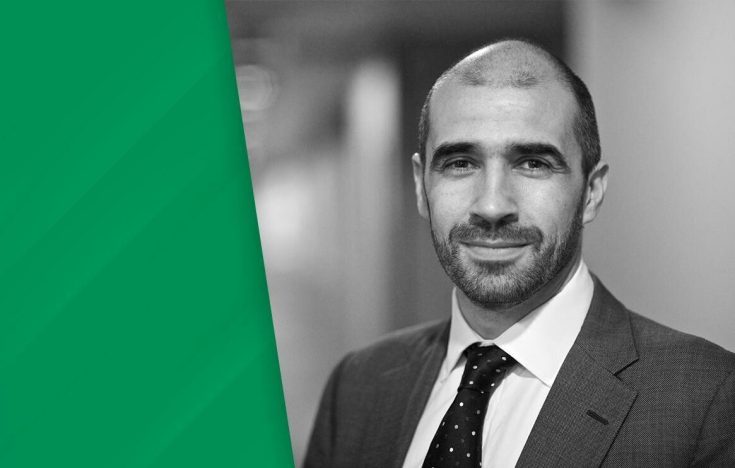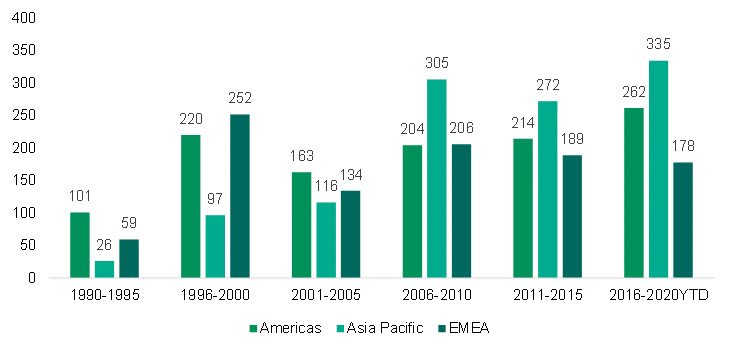Getting an Initial Public Offering (IPO) off the ground is complicated. Fresh off BNP Paribas’ top prize as The Banker’s “Investment Bank of the Year for IPOs 2020”, perhaps it’s worthwhile recalling what an IPO is and what is involved in making it happen.
Roger, let’s start with some history: what can the IPOs of the past tell us about what they are?
Roger Barb: The experience of the 1980s is instructive. The sale of state-owned utility British Gas in 1986 was part of the UK government’s extensive privatisation programme of the time. Leaving aside ideological controversies, the prevailing view was that the sale of shares to the public raised capital for more investment, with greater transparency and accountability, leading to greater efficiency and better management. (Perhaps confusingly, “privatisation” can also mean taking a public company private, or delisting, but in the context of a government sale of state assets, “privatisation” means “going public”, or the offer to investors to buy shares in a public-sector entity.)The 1980s may feel like a long time ago. However, efforts to raise public funds for investment is older than many imagine, going back to the Levant Company and the East India Company in the 16th and 17th centuries, and accounts of similar financing stretching back to Ancient Rome.
Tesla’s 2010 IPO valued the firm at $17 a share; since August 2020, it breached $400 – a 25-fold increase.
Fast-forwarding back to the present
day, the principles behind the flotations of the 1980s are not different for
conventional IPOs today: “going public” means a transfer of risk (and control)
from private to public. In return, it allows companies to raise substantial
amounts of capital for investment. Just as such investment fuelled the
expansion of the roaming globalists of colonial Europe several centuries ago,
it fuels the expansion of global companies today.
IPOs are therefore a milestone for
companies that are scaling up. Entrepreneurs realise the monetary value of
years of hard work, while investors join in the adventure with the hope of
watching their savings grow in value. The “stock market” is part of our
everyday vernacular.
Total IPO Deal value (€bn) by geography
Can you give us any examples?
RB: Today there are thousands of names in the stock market. For my generation it may have started with high-profile privatised UK public-sector entities. These include British Gas (now Centrica), British Telecom (1984), British Aerospace (1986) and British Airways (1987), to name but a few.More recently, the world’s biggest household corporate names have given us the biggest IPOs in the world. The IPO from Spotify, the Swedish music-streaming giant, was the biggest of 2018 at $9.2 billion in an unconventional direct listing. Alibaba, the Chinese e-commerce giant, raised a staggering $25 billion in its 2014 launch on the New York Stock Exchange. Facebook’s was one of the most hyped in history, its IPO worth over $16 billion in 2012. General Motors rose from the ashes of its bankruptcy with a $20 billion relaunch in 2010. Italian energy firm Enel raised $17 billion in 1999. Whether it is to raise capital for a new project or to help existing investors reap the rewards of their hard work, an IPO is where savings turn into investment.
And IPOs don’t only generate money. They also make headlines. Tesla’s 2010 IPO valued the firm at $17 a share; in August 2020, the shares breached the $400 level – a 25-fold increase.
So it’s easy money for companies that want to scale up?
RB: “This won’t hurt a bit” is a phrase a physician wielding a big syringe might utter to reassure the child about an impending vaccination. It’s not untrue: most injections don’t really hurt, as long as you know what’s coming and are aware why you’re doing it. But it’s not something you’d volunteer for. In other words, there is a quid pro quo, you do need a reason for going through with it.An IPO is the same. It’s months of hard work. It’s time consuming. It can be expensive and you don’t really know the outcome until you’ve completed most of the journey. What’s more, inviting the public in means fundamentally changing the way your company is run. Put in those terms, you might ask yourself why anyone would want to proceed. But proceed they do from an ever expanding universe of nations and industries.
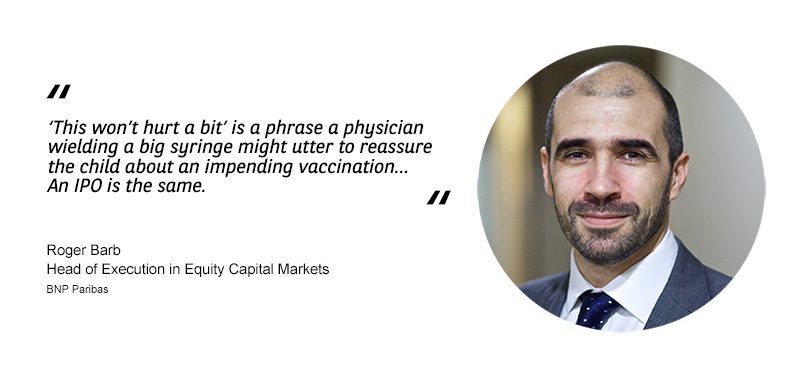
Interestingly, actual IPO deal count has declined over the years. For example, according to Bloomberg, US exchanges saw 5,724 IPOs in the 1990s, 1,455 more than the following two decades combined. The dollar value of IPOs, however, jumped from $482bn in the 1990s to $569bn in the 2000s (first decade). Average and cumulative deal size is larger. Small IPOs (less than $100m) are much rarer, reflecting perhaps an increase in the private funding options available to smaller companies. But the frequency of the largest jumbo offerings ($10bn+) grew significantly, especially in the 2010s.
It’s easy money for investors, then?
RB: Hedge funds. Long only. Growth at a reasonable price. Total return. Income. Global emerging markets. Sector-based. Regional specialist. Index tracker. Soft index tracker. ETF. Sovereign wealth. Supranational. Private wealth. Retail.There are dozens of investor categories and thousands of potential investors to consider when preparing for an IPO. Some will be based locally, some in the international money centres, some professional, some not.
No. of IPO transactions by geography
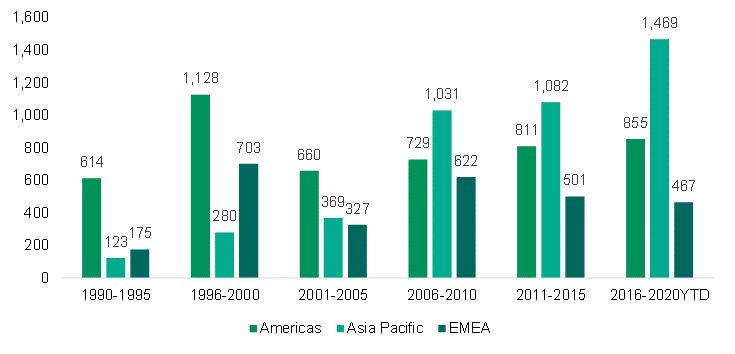
Accessing all this potential demand means having the investor relationships and knowing who might be interested in which kind of story; about why and what that means in terms of the amount of money they may be able to deploy; and about how they will think about the valuation.
Is it easy money? One of the key issues for both sides in an IPO is trying to ensure an alignment of expectations. The process of building a dialogue between one vendor and a subset of the investor base who can help form a judgment as to where a transaction might work is critical to ensuring a satisfactory outcome for both sides.
So in answer to the question: it’s complicated.
Where does a bank like BNP Paribas come in?
RB: Given the seriously complicated task of putting together an IPO, the sheer length of the list of people from different banks working on any deal is daunting, and each has their specific areas of focus.There are the investment bankers who work directly with the company on the equity story, the valuation, and the capital structure. There are the equity capital markets (ECM) specialists, who advise the issuers based on market insights – the structuring, execution and the timing. There are the syndicate specialists, who drive the interaction and dialogue with investors, linking the salesforce with the investors. There are the sales teams who directly face the investors. There are the research teams who provide… the research.
We must also mention the unsung heroes in other areas whose roles are vital for the success of an IPO – the compliance teams, the lawyers, the roadshow teams. I could go on.
And there is another army of the bank, not only external legal and accounting advisors. There are the regulators and the exchanges, who provide the framework within which IPOs can thrive, and with whom there must be a constant dialogue. Then there are the public relations specialists, who must navigate the thicket of the traditional and social media jungle made of journalists, commentators, influencers, of all different sizes. It’s wild out there.
So where does a bank like BNP Paribas fit in? Someone has to pull it all together and deliver a professional coherent service. At the end of the day, it’s our job to ensure that savings turn into productive investment and everyone goes home happy.
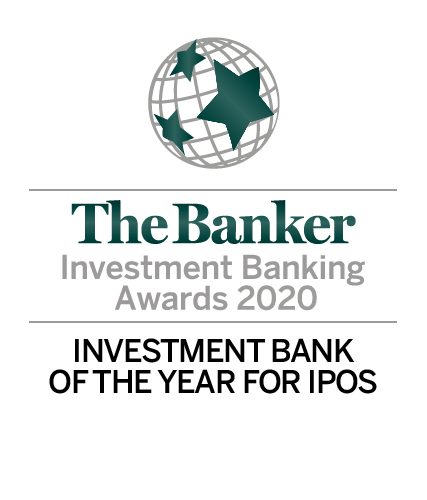
Read more about the Banker Award wins here:
